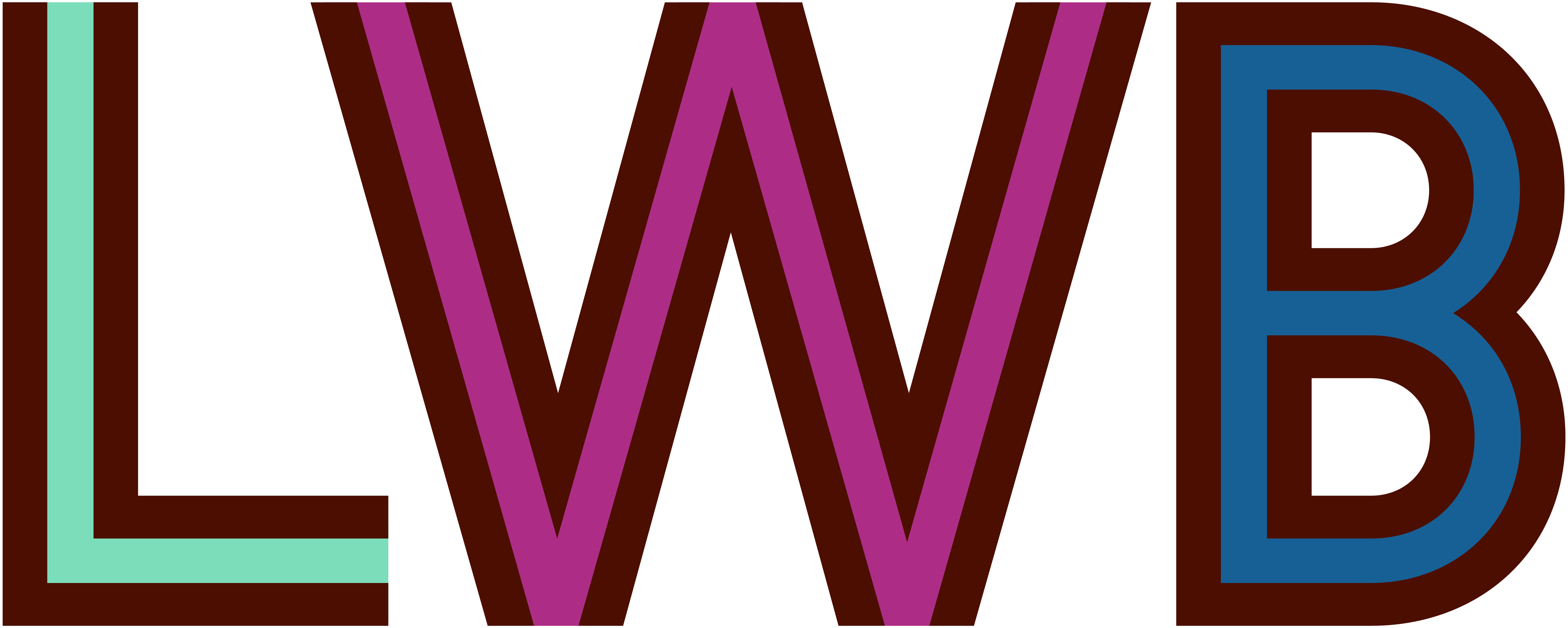In the context of world education, Cambodia’s education system has a unique history that shows its resilience. From the early influences of the French colonization era to the current state-driven structure, the education system has undergone significant transformation. Yet, as with many developing nations, Cambodia’s education system faces hurdles that international NGOs like Love Without Boundaries are striving to overcome.
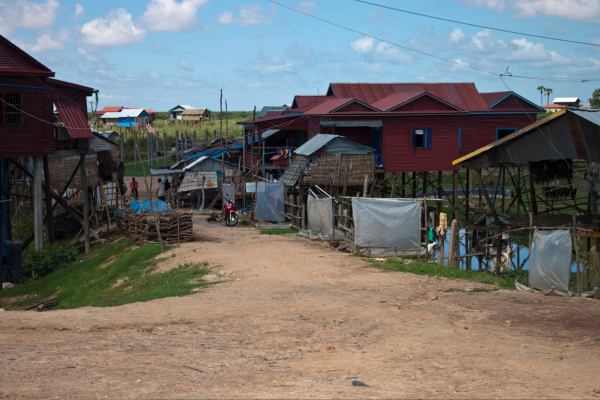
Historical Influences and Evolution of Cambodia’s Education System
Before the 20th century, education in Cambodia had been provided primarily to boys through local Buddhist pagodas and emphasized religious teachings. From 1863 to 1953, the colonization of Cambodia by France saw Cambodia’s education system become formalized under the influence of Western models. While the first government public schools were created, many Cambodian schools still operated in temples.

Following Cambodia’s independence from France in 1953, Cambodia’s king made a commitment to nation-building through education, investing 20% of the national budget into educating the country’s children. However, all the progress made in the 1960s came to a crippling halt when Cambodia was plunged into civil war.
Tragically, during the Cambodian genocide from 1975-1979, the vast majority of teachers in the country were either killed or fled the country to survive. The Pol Pot regime destroyed most of the fledgling public school buildings. Following the end of the war, Cambodia had to rebuild its education system from almost nothing, and an entire generation of Cambodian children grew up illiterate.
Structure and Curriculum of Cambodia’s Education System
Today, Cambodia’s education system operates under the national government, particularly the Ministry of Education.
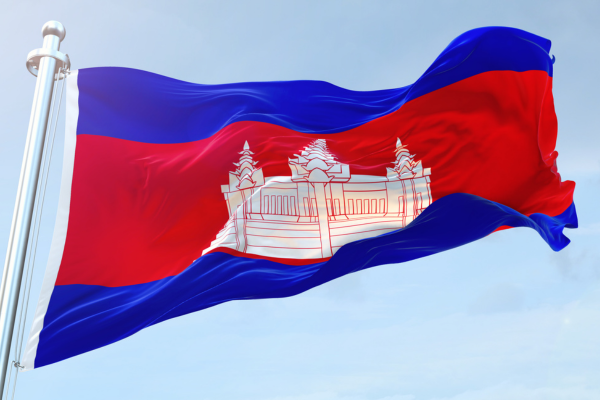
The structured framework of public education comprises several layers:
- Primary School (Grades 1-6): A foundational level, emphasizing core subjects like Khmer language, mathematics, science and social studies, physical and health education, and local life skills.
- Lower Secondary School (Grades 7-9): An intermediate stage focusing on subjects like mathematics, foreign languages, and science.
- Upper Secondary School (Grades 10-12): A stage preparing students for tertiary education and the workforce.
The curriculum of Cambodia’s education system emphasizes national heritage combined with modern educational needs.
School enrollment has skyrocketed since the early 2000s. By 2011, primary enrollment nationwide reached over 90%, though the numbers dipped substantially for the secondary tiers, with 34% enrollment for lower secondary and only 21% for upper secondary.
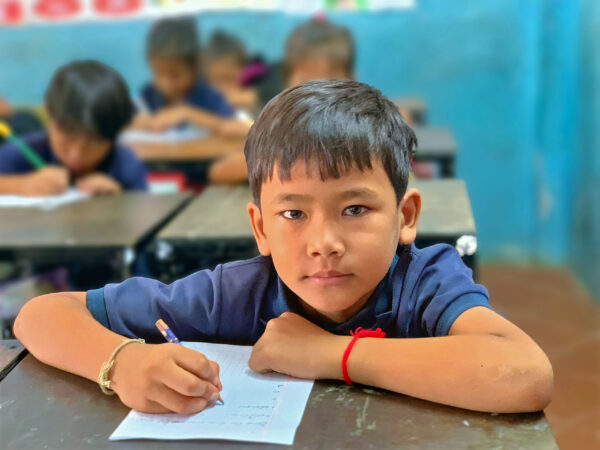
For families living in poverty, secondary education is still often viewed as unnecessary since a majority of jobs in Cambodia center around agriculture, construction, and textiles. Children finishing grade 6 in primary school often face great pressure to drop out and begin working to supplement their family’s income.
Current Challenges to Cambodia’s Education System
While Cambodia’s education system has made enormous strides over the past two decades, its promising landscape is not without challenges. The persistent issues include:
- Half-Day School Programs: Due to a lack of teachers and infrastructure, many public schools in Cambodia’s education system only operate for half-a-day morning or afternoon sessions. Many classes are overcrowded, and it is difficult for students to make substantial academic progress by attending just a few hours a day.
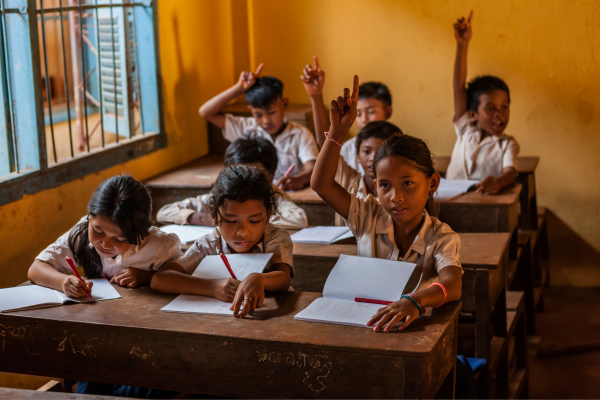
- Prevalence of Private Education: Often perceived as superior, private education is available at all tiers. But this boom has a downside. Public school teachers, grappling with lower government wages, often resort to taking second jobs at private schools, only showing up for their public school classes on occasion. Others charge personal fees to students to allow them to access the full school curriculum. For students unable to afford the extra costs, their education is greatly limited.
- Education Disparity: In impoverished regions like the Cambodia-Thailand border, only 35% of children complete primary school. This figure is a glaring contrast to the national average.
- School Access in Rural Areas: For children living in the most rural parts of the country, government schools are often located too far from student’s homes for them to safely travel. Cambodia is on the Tier 2 watch list for human trafficking, so many families will not allow their children to walk 5-10 km on their own to reach the nearest school. In addition to the dangers of human trafficking, monsoonal rains often make dirt roads impassable for children.
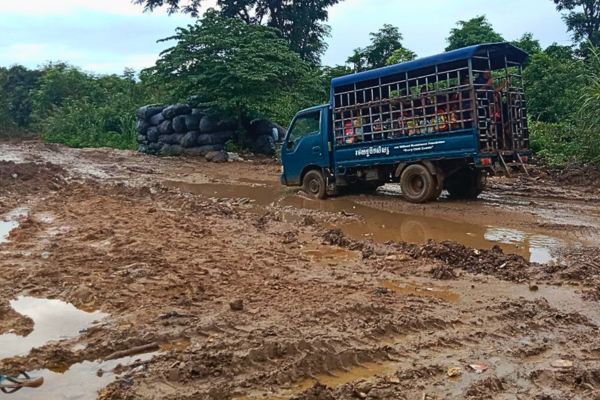
Love Without Boundaries: A Results-Driven Education Solution
In this challenging scenario, organizations like Love Without Boundaries (LWB) step in as a beacon of hope, offering real solutions to the challenges facing Cambodia’s education system. Over the past six years, LWB’s education programs have expanded in western Cambodia’s rural villages, bringing all-day, high-quality learning directly to the heart of underserved regions.

Our Cambodia education program enrolls over 700 students, providing at-risk children with not only a world-class education but critical nutritional support as well.
In particular, the Sokhem and Rangsei Believe In Me schools have been instrumental in transforming the educational experience for so many. However, with the demand for enrollment at our school campuses growing, both of these education programs are currently underfunded. This increasing need underscores the dire circumstances under which these children live:
- Health: Nearly 50% of the children in these rural villages are malnourished, hindering their holistic development. LWB provides nutritious hot meals as part of our all-day school program.
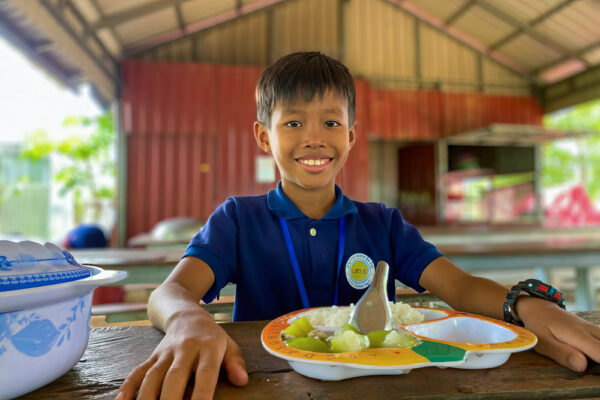
- Amenities: A staggering 70% of children in this region lack access to clean water, elevating health risks. LWB provides access to clean drinking water at school. In addition, the schools promote the dignity of students’ personal hygiene by providing school toilets in addition to dental care and education.
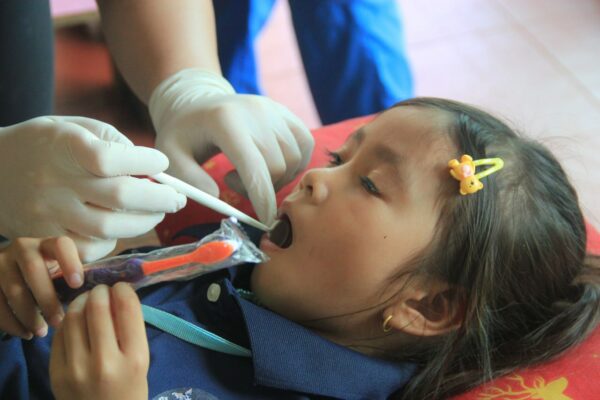
- Medical Access: A dearth of healthcare infrastructure in the rural villages makes the presence of LWB’s school medic, who provides emergency and primary care to children, an essential lifeline.
The Dream Big for Cambodia Education Campaign
As part of our ongoing commitment to education in Cambodia, LWB is launching our Dream Big for Cambodia Education campaign. We’ve set an ambitious goal of finding 100 new child sponsors.
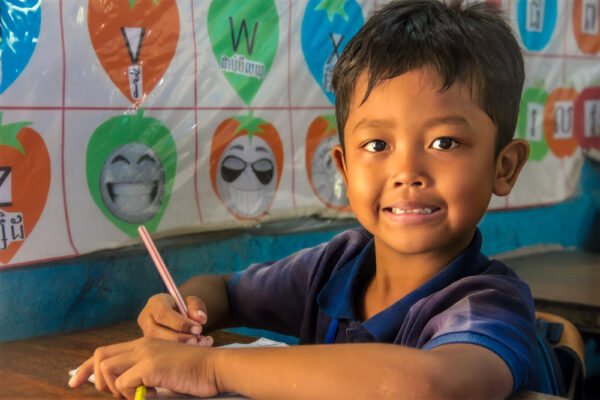
A monthly sponsorship of $25, or a gift in any amount, will make a real and lasting difference in the life of a vulnerable child. Sponsors can follow along with each student’s education journey through regular updates. Donations in any amount are always appreciated.
With your assistance, every child in this impoverished region can access education, nutrition, clean water, and medical aid. Your contribution can change a child’s future for the better, providing them with the education they so desperately need and deserve.
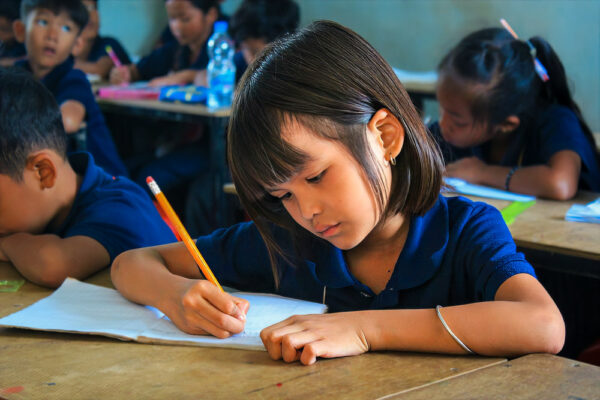
In Conclusion
Cambodia’s education system, though resilient, faces challenges that demand global attention. Together, with your support for Love Without Boundaries initiatives, we can rewrite the educational narrative for countless Cambodian children.
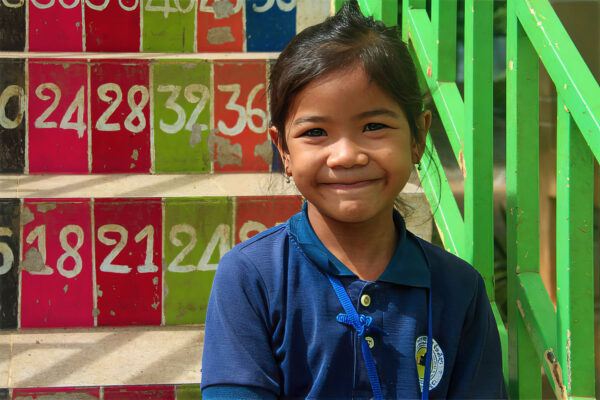
Every child deserves a chance to learn and thrive. Together, let’s Dream Big for Education!
Data Sources: Cambodian Education Forum and Unicef
Search
Categories
- Adoption
- Cambodia Programs
- China Programs
- Education
- Foster & Family Care
- Guatemala Programs
- Medical Care
- Nutrition
- Special Projects
Tags
20 Years of Hope adoption Amrita Hospital Beijing Believe In Me Believe In Me School Cambodia cardiac surgery charity children's charity China China Healing Home cleft cleft lip cleft mission cleft palate cleft surgery College scholarship COVID domestic adoption Early Childhood Development Center Education Foster Care Guatemala healing home Heartbridge heart defect heart surgery Hope Foster Home India international adoption landfill Love Without Boundaries malnutrition Nutrition orphan orphanage poverty Rangsei sponsor a child Story of Hope Uganda Uganda Heart Institute Unity Initiative VSD
